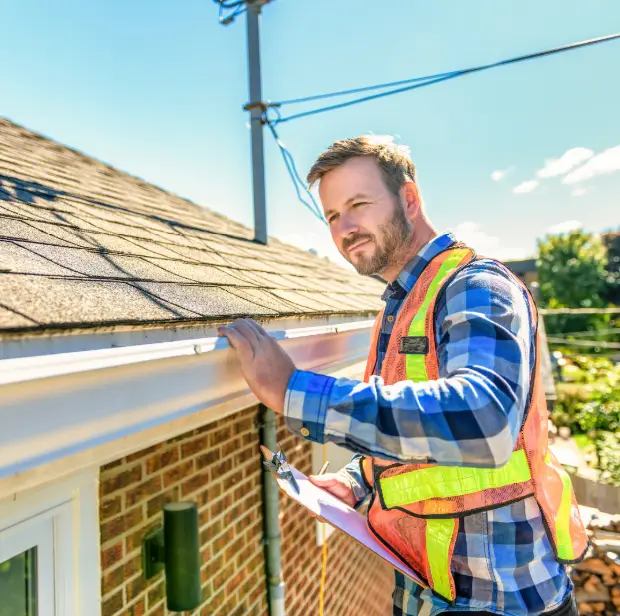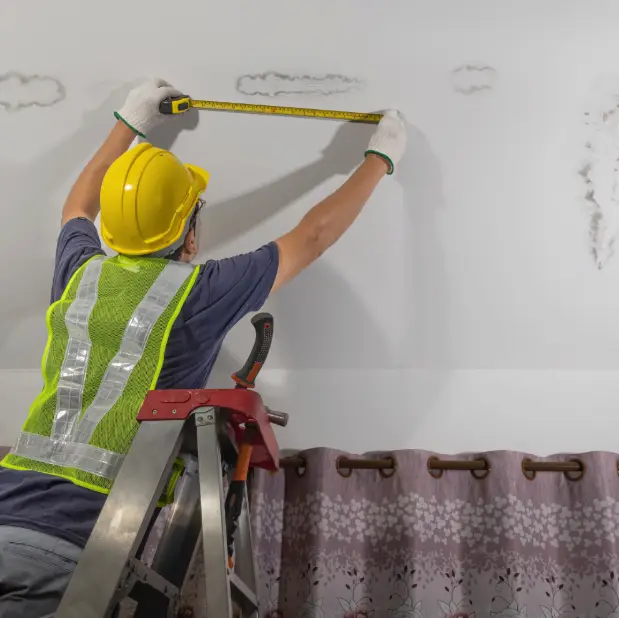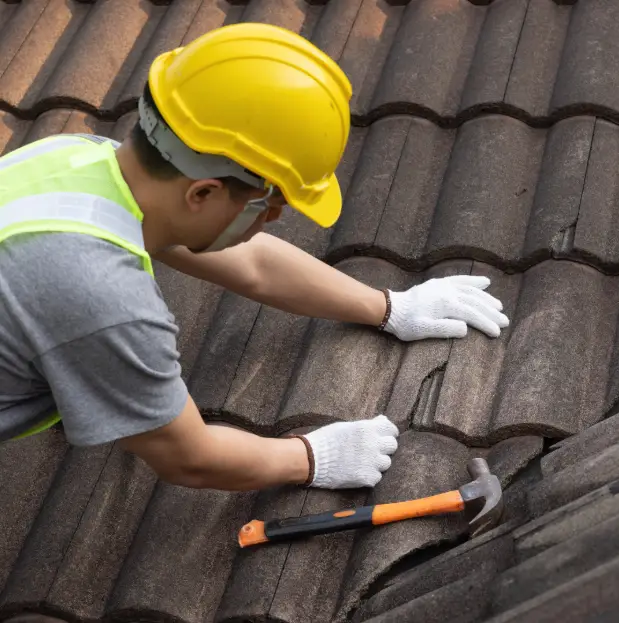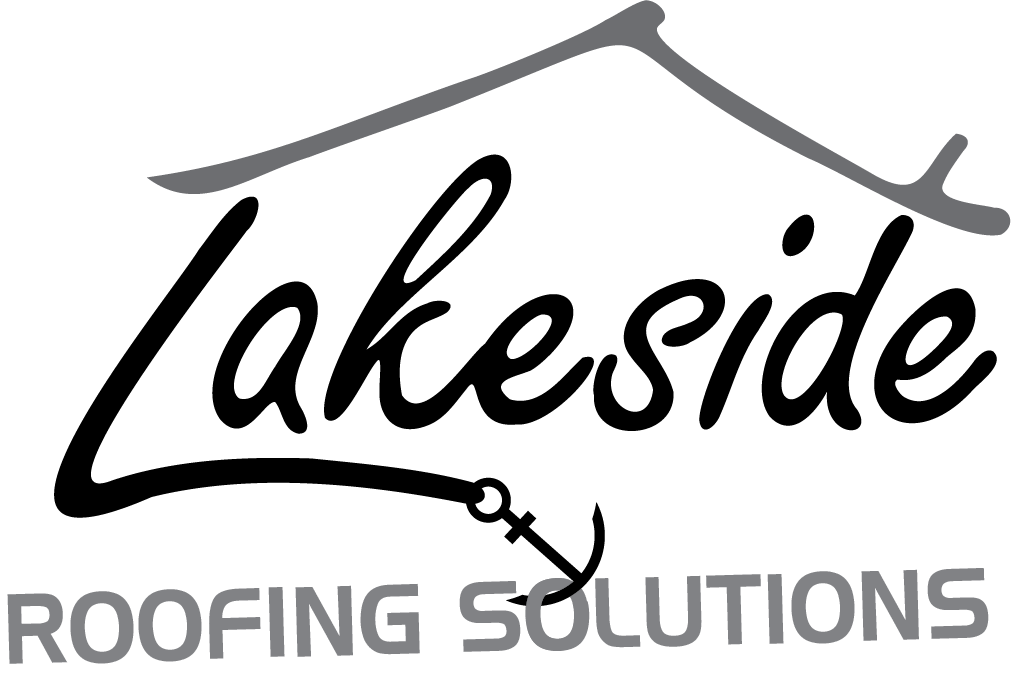When it comes to maintaining the integrity and longevity of your home, your roof plays a crucial role. It serves as the primary barrier against harsh weather conditions, protecting your family and belongings from external elements. Regular roof inspections can prevent costly repairs and ensure your home remains safe and secure.
By taking proactive measures, homeowners can avoid the inconvenience and expense of emergency repairs. Whether you’re a homeowner or a professional roofing contractor, understanding the essentials of roof inspection is key. This guide outlines everything you need to know for a thorough roof inspection, empowering you to safeguard your investment effectively.
Why Roof Inspections Are Essential
A roof inspection involves checking the condition of your roof to identify any potential issues before they become serious problems. Neglecting regular inspections can lead to minor issues escalating into major, costly repairs, disrupting the safety and comfort of your home. Regular inspections can help you spot damage early, prolong the life of your roof, and save money on extensive repairs. By making inspections a routine part of home maintenance, you ensure the overall health and efficiency of your roofing system.
Benefits of Regular Roof Inspections
- Prevention of Major Repairs: Early detection of leaks or structural damage can prevent expensive repairs. Addressing minor issues promptly can save thousands of dollars in repair costs and extend the lifespan of your roof.
- Increased Roof Lifespan: Regular maintenance and timely repairs can extend the life of your roof. By identifying and fixing small problems before they worsen, you can maximize the durability and functionality of your roofing materials.
- Energy Efficiency: Ensuring your roof is in good condition can improve your home’s insulation, reducing energy costs. A well-maintained roof helps regulate indoor temperatures, enhancing comfort while lowering heating and cooling expenses.
- Peace of Mind: Knowing your roof is in good condition provides security and comfort. With the assurance that your home is protected from potential hazards, you can focus on other aspects of home maintenance and enjoy a worry-free living environment.
Key Components of a Roof Inspection

A thorough roof inspection covers several components. Each aspect of the roof plays a vital role in maintaining its overall functionality and structural integrity. Understanding what to look for can help you identify potential issues quickly. By familiarizing yourself with these components, you can conduct thorough inspections and take action before problems arise.
External Inspection
The external inspection involves examining the visible aspects of the roof from the outside. This step is crucial in identifying any surface-level damage that may affect the roof’s performance.
Shingles
- Check for Missing or Damaged Shingles: Look for any cracked, curling, or missing shingles. Damaged shingles can compromise the roof’s ability to shed water, leading to leaks and water damage.
- Examine for Granule Loss: Granules protect shingles from UV rays. If you notice granule loss, it’s a sign that shingles may need replacing. Granule loss can accelerate shingle deterioration, reducing the roof’s lifespan and effectiveness.
Flashing
- Inspect Flashing Around Chimneys and Vents: Ensure flashing is intact and sealed properly to prevent water intrusion. Improperly sealed flashing can lead to leaks and structural damage over time.
- Check for Rust or Corrosion: Metal flashing can rust over time, leading to leaks. Regularly inspecting and maintaining flashing can prevent long-term water damage and costly repairs.
Gutters and Downspouts
- Clear Debris: Ensure gutters and downspouts are free of leaves and debris. Clogged gutters can cause water to back up, leading to roof and foundation damage.
- Check for Damage or Sagging: Ensure gutters are securely attached and not sagging. Damaged or sagging gutters can disrupt water flow, leading to water pooling and potential roof damage.
Internal Inspection
The internal inspection focuses on the components of the roof that are visible from inside the home, such as the attic and structural elements.
Attic
- Look for Signs of Water Damage: Check for water stains or mold on attic ceilings and walls. Water damage in the attic can indicate leaks and compromise the structural integrity of your roof.
- Inspect Insulation: Make sure insulation is dry and evenly distributed. Wet or uneven insulation can affect energy efficiency and lead to higher utility bills.
Roof Structure
- Check for Sagging: Inspect the roof structure for signs of sagging or unevenness. Structural issues can indicate deeper problems that require professional assessment.
- Look for Signs of Rot: Examine beams and rafters for signs of rot or damage. Rot can weaken the roof’s framework, posing serious safety risks.
Roof Leak Repair: Spotting the Signs

Leaks can cause significant damage if not addressed promptly. Identifying the early signs of a leak can save you from costly repairs and extensive water damage. Knowing how to spot the signs of a leak can save you from repairs.
Common Signs of Roof Leaks
- Water Stains on Ceilings or Walls: Brown or yellow stains are often a sign of water intrusion. These stains can expand over time, indicating ongoing leaks that require immediate attention.
- Mold or Mildew Growth: Excessive moisture can lead to mold growth, posing health risks. Mold can spread quickly, affecting indoor air quality and causing respiratory issues.
- Dripping Water: If you notice water dripping during rain, it’s a clear sign of a leak. Promptly addressing dripping water can prevent further damage to your home’s interior.
- Musty Odors: Persistent musty smells can indicate hidden water damage. Musty odors often accompany mold growth, signaling moisture problems that need resolution.
Residential Roofing Maintenance Tips
Regular maintenance is essential to keep your roof in top condition. Consistent care not only extends the life of your roof but also enhances its performance. Follow these tips to ensure your roof remains durable and efficient.
Seasonal Maintenance
- Spring and Fall Inspections: Conduct inspections in spring and fall to prepare for harsh weather conditions. Seasonal changes can impact your roof’s condition, making regular inspections crucial for identifying potential issues.
- Trim Overhanging Branches: Prevent branches from damaging shingles during storms. Overhanging branches can scrape the roof’s surface and increase the risk of damage during severe weather.
- Clean Gutters Regularly: Keep gutters free of debris to ensure proper drainage. Regular gutter cleaning prevents water buildup and protects your roof and foundation from damage.
Professional Maintenance
- Hire a Roofing Company: Consider hiring a professional roofing company for annual inspections and maintenance. Professionals have the expertise to identify hidden problems and offer effective solutions.
- Schedule Prompt Repairs: Address any issues identified during inspections immediately to prevent further damage. Timely repairs can prevent minor issues from escalating into more extensive and costly problems.
Creating Your Ultimate Roof Inspection Checklist

Having a checklist ensures that you cover all the necessary areas during an inspection. A well-organized checklist helps streamline the inspection process and ensures no critical components are overlooked. Here’s a sample checklist you can use:
Exterior Checklist
- Examine shingles for damage or missing pieces. Regular checks prevent potential leaks and ensure roof longevity.
- Inspect flashing for signs of rust or improper sealing. Properly sealed flashing guards against water intrusion.
- Clear gutters and ensure they are securely attached. Clean, well-attached gutters ensure effective water drainage.
- Check for signs of granule loss on shingles. Granule loss indicates shingle wear and potential UV damage.
Interior Checklist
- Inspect the attic for water stains or mold. Addressing attic moisture prevents structural and health issues.
- Ensure insulation is dry and evenly spread. Proper insulation maintains energy efficiency and comfort.
- Check the roof structure for sagging or rot. Identifying structural issues early prevents major repairs.
Post-Inspection Steps
- Document Findings: Take notes and photographs of any issues found during the inspection. Detailed records help prioritize repairs and communicate effectively with contractors.
- Plan Repairs: Prioritize repairs based on severity and urgency. Addressing the most critical issues first ensures the safety and functionality of your roof.
- Schedule a Follow-Up: Plan another inspection to ensure repairs were effective and no new issues have arisen. Regular follow-ups maintain your roof’s health and prevent future problems.
Conclusion
Roof inspections are an essential part of home maintenance, protecting your investment and ensuring your family’s safety. By prioritizing regular inspections, you can address potential issues before they escalate, maintaining your home’s structural integrity. By following this ultimate roof inspection checklist, you can catch potential issues early, maintain your roof’s integrity, and avoid costly repairs.
Whether you handle inspections yourself or hire a professional like us here at Lakeside Roofing Solutions, regular attention to your roof can save you time, money, and stress in the long run. Investing in your roof’s health ultimately contributes to the overall comfort, safety, and value of your home.

